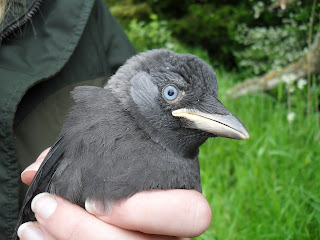Pages
- Home
- May 25
- Apr' 25
- Mar' 25
- Feb' 25
- Jan' 25
- Dec' 24
- Nov' 24
- Oct' 24
- Sep' 24
- Aug' 24
- July 24
- June 24
- May 24
- Apr' 24
- Mar' 24
- Feb' 24
- Jan' 24
- Dec' 23
- Nov' 23
- Oct' 23
- Sep' 23
- Aug' 23
- July 23
- June 23
- May 23
- Apr' 23
- Mar' 23
- Feb' 23
- Jan' 23
- Dec' 22
- Nov' 22
- Oct' 22
- Sept' 22
- Aug' 22
- Jul' 22
- Jun' 22
- May 22
- Apr' 22
- Mar' 22
- Feb' 22
- Jan' 22
- Dec' 21
- Nov' 21
- Oct' 21
- Sep' 21
- Aug' 21
- Jun' 21
- Jul' 21
- Mar' 21
- May 21
- Apr' 21
- Feb' 21
- Nov' 20
- Jan' 21
- Dec' 20
Welcome to the LDV NNR ringing blog, this blog is designed to share the experiences, findings and tales from a group of dedicated ringers. We specialise in conservation orientated research projects, largely focusing on wildfowl, waders, owls and birds of conservation concern, in and around the Vale of York NNR's.
NB - Whilst the purpose of this blog was initially designed to cover our nationally important wildfowl ringing activities, it now also features wildlife and work posts, explaining how we manage the NNR for both wildlife and people.
For daily sightings please visit our Twitter account: https://twitter.com/ldv_nnr (@LDV_NNR)
For details of events, volunteer tasks and wildlife images please visit our Facebook account: https://www.facebook.com/Lower-Derwent-Valley-Skipwith-Common-NNR
Tuesday, 26 June 2012
20/06/12 - Highlight of the year?!
Sunday, 10 June 2012
07/06/12 - Busy busy
At a farm which has been used for many years, two new boxes had been put up - the owner was most pleased that we found a female Kestrel with 4 newly hatched chicks, plus a pair of Barn Owls (we managed to catch them both in the box) which had 4 eggs and a newly hatched chick. We look forward to going back and ringing them with her - it’s nice to be able to share it with the landowners especially when they’ve gone to the trouble of putting their own boxes up.
A Jackdaw which was almost ready to fly was caught in a box in the afternoon, plus a new adult Barn Owl and a re-trap, a few other eggs and newly hatched chicks were also found. Disappointingly a few of the sites we’d marked down that have had Barn Owls breeding in the past had been taken over by Feral Pigeons - much to the frustration of the landowners!
Friday, 8 June 2012
31/05/12 - May summary
It’s definitely been a month for quality, and it's been especially good for birds from the nest - along with the usual Blue Tits, Great Tits and Tree Sparrows that we’ve done from the small boxes, we also found a nest of Wrens in one of the artificial House Martin nests. We ringed 5 chicks from a clutch of 6 (one dead). Only 160 pulli Wren were ringed in the UK during 2011 so it was a most pleasing find. Below is a table summarising the main species ringed within the LDV this month and the running years total.
May Year
| WATERFOWL | |||
| Grey Heron | 0 | 10 | |
| Mute Swan | 0 | 2 | |
| Greylag Goose | 0 | 3 | |
| Brent Goose | 0 | 1 | |
| Shelduck | 0 | 78 | |
| Wigeon | 2 | 114 | |
| Teal | 0 | 281 | |
| Mallard | 25 (pulli) | 245 | |
| Pintail | 0 | 5 | |
| Gadwall | 0 | 4 | |
| Moorhen | 0 | 11 | |
| Coot | 0 | 4 | |
| Little Grebe | 0 | 1 | |
| WADERS | |||
| Whimbrel | 0 | 2 | |
| Snipe | 0 | 24 | |
| Jack Snipe | 0 | 1 | |
| Ruff | 0 | 1 | |
| Redshank | 0 | 2 | |
| Lapwing | 2 | 3 | |
| Oystercatcher | 1 | 2 | |
| RAPTORS/OWLS | |||
| Red Kite | 0 | 1 | |
| Tawny Owl | 9 | 11 | |
| Little Owl | 0 | 1 | |
| Barn Owl | 40 (+2 RT) | 40 | |
| Kestrel | 5 (pulli) | 5 | |
| PASSERINES | |||
| Skylark | 0 | 4 | |
| Woodlark | 1 | 1 | |
| Corn Bunting | 0 | 20 | |
| Wheatear | 2 | 2 | |
| Jackdaw | 8 | 8 | |
| Mistle Thrush | 1 | 1 | |
| Wren | 5 (pulli) | 5 | |
| NON-PASSERINES | |||
| Swift | 27 | 27 | |
| Cuckoo | 2 | 2 | |
| Stock Dove | 1 | 1 | |
| 131 | 923 |





























